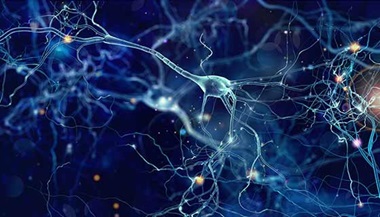Nystagmus
Reviewed By:
Nystagmus is an involuntary, rhythmic side-to-side, up and down or circular motion of the eyes resulting from a variety of conditions Colin Patrick Kane, O.D., tells you what you need to know about nystagmus.
What You Need to Know
- Nystagmus most commonly affects both eyes. It may only last seconds or it may be permanent. It can occur in certain directions of gaze or head position. It may only last seconds and occur in certain directions of gaze or head position. Or it may be permanent.
- There are generally two types of nystagmus. With pendular nystagmus, the eye motion is like that of a pendulum swinging back and forth, equally in both directions. Jerk nystagmus, the more common type, is characterized by eyes that drift slowly in one direction and then jerk back the other way. Nystagmus patterns may have a combination of these different types and directions of movement.
- Doctors may notice nystagmus in people being evaluated for dizziness, vertigo or other balance problems affecting the inner ear.
Nystagmus Symptoms
Patients whose eyes are “shaking” do not necessarily see the world as moving. Many people with nystagmus simply have blurred vision and discomfort when looking in directions that may worsen their nystagmus. Oscillopsia, the illusory sensation that the stationary visual world is moving, might be noticed by patients with more severe nystagmus.
When nystagmus is related to a problem involving the vestibular system in the inner ear or the brain, vertigo, dizziness or loss of balance may be present.
What causes Nystagmus?
Jerk nystagmus is usually caused by diseases affecting the inner ear balance mechanisms or the brain’s movement regions (brainstem or cerebellum).
Pendular nystagmus can be caused by brain diseases such as multiple sclerosis, but it can be a congenital problem as well.
Children may be born with nystagmus due to abnormalities of the eye or brain. These children require prompt evaluation by an eye care specialist.
Nystagmus Diagnosis
When nystagmus is a new symptom and occurs with new dizziness or vertigo, the patient should seek prompt medical attention.
People experiencing nystagmus for the first time should see a neurologist or neuro-ophthalmologist. Depending on the appearance of the eye movement, a neurologist or neuro-ophthalmologist helps identify the source of the nystagmus (brain or ear), which can help determine urgency.
Depending on associated symptoms, the doctor may order tests such as a brain MRI or blood work to rule out a potentially dangerous cause such as stroke or other conditions that can cause movement disorder.
Treatment for Nystagmus
Depending on the source, nystagmus can be temporary and resolve on its own. Treatment of the underlying cause of acquired nystagmus, if possible, can improve symptoms, though sometimes they persist. Medications may be recommended to treat persistent nystagmus, but not all patients respond the same to medical treatment, and the side effects can outweigh the benefit.







